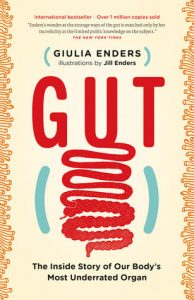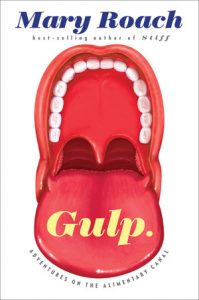 Why do we say that we have stomachaches when in reality the aches happen a little further down the line? Why not “I have an intestineache”* instead? It would be a lot more accurate, for one. Though if we do that, maybe we should also specify whether it’s a small intestineache or a large one, and that would just get confusing, because are you referring to an ache in the small intestine or a small ache in the intestine (unspecified), or a small ache in the large intestine or vice versa? You get the point. Have I surpassed the number of times you can read the word “intestine” without getting a bit uneasy yet? Because while it’s fascinating stuff, the gut, I find it increasingly curious that we have maintained such an aversion to talking about these parts of our bodies and their byproducts – I’m referring primarily to feces, but of course, chyme and other such substances also make us squirm – despite how integral they are to our lives.
Why do we say that we have stomachaches when in reality the aches happen a little further down the line? Why not “I have an intestineache”* instead? It would be a lot more accurate, for one. Though if we do that, maybe we should also specify whether it’s a small intestineache or a large one, and that would just get confusing, because are you referring to an ache in the small intestine or a small ache in the intestine (unspecified), or a small ache in the large intestine or vice versa? You get the point. Have I surpassed the number of times you can read the word “intestine” without getting a bit uneasy yet? Because while it’s fascinating stuff, the gut, I find it increasingly curious that we have maintained such an aversion to talking about these parts of our bodies and their byproducts – I’m referring primarily to feces, but of course, chyme and other such substances also make us squirm – despite how integral they are to our lives.
But that’s more food for thought** than the primary focus of this post, because I just read two delightful books on the gut and I’ve never felt more enthusiastic discussing our stomachs, intestines, and what happens to stuff that goes in and the stuff that comes (back) out (and depending on what animal you are, sometimes right back in again)! The outright bubbly enthusiasm that gushes forth from Enders & Roach in Gut: The Inside Story of Our Body’s Most Underrated Organ (Enders) and Gulp: Adventures on the Alimentary Canal (Roach) is both palpable and infectious – you’re sure to rethink your views about your gut and all the bacteria that reside there, so come and take a vacation in the labyrinth that is your own gut!
*I’m actually getting the squiggly red line from spellcheck telling me that “intestineache” is not a real word.
**What kind of byproducts arise of food for thought?
 I’ve reviewed another book by Roach before, Stiff, which talks about human cadavers, and first of all I’d really like to note that Roach’s writing has matured noticeably over the years. She’s still witty and sharp, and her enthusiasm for making the dark squishy parts of our bodies an exciting topic of discussion is basically unmatched, but something about Gulp strikes me as easier to read and engage with than Stiff – she’s maturing as an author, and as a reader, that’s pretty exciting to see.
I’ve reviewed another book by Roach before, Stiff, which talks about human cadavers, and first of all I’d really like to note that Roach’s writing has matured noticeably over the years. She’s still witty and sharp, and her enthusiasm for making the dark squishy parts of our bodies an exciting topic of discussion is basically unmatched, but something about Gulp strikes me as easier to read and engage with than Stiff – she’s maturing as an author, and as a reader, that’s pretty exciting to see.
If you read both Gulp & Gut, while you’ll find that there is some great amount of overlap in subject content (there’s only so much one can write about on the topic of the gut and the alimentary canal for popular consumption, after all), there was never a moment in my reading that I found myself bored or wanting to skip over any parts of either book because of the repetition. Enders and Roach have quite different ways of writing – both delightful – and you’ll be delighted to learn all about what happens to food as it makes its way through your body throughout both of these books. You might feel a bit guilty the next time you take antibiotics (think about all the bacteria living in your stomach & intestines you’re going to kill!), but you’ll also find out why you might experience some stomach/intestine upsets whenever you go on vacation, and other fun stuff. I really enjoyed reading both of these, and learning about how we act as hosts for other organisms with which we enjoy a reciprocal relationship. Here’s to hoping you will, too.